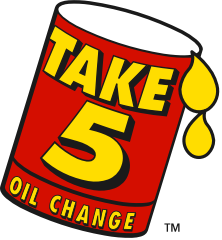Curious about our installation process? We are happy to answer any questions you may have. Here are some frequently asked questions from our customers but please reach out with additional questions and/or concerns.
Polished Concrete
Concrete polishing has a standard step by step process that can be followed for most concrete floors; however, concrete floors vary in size, age, and damage, so it should be noted that each situation and circumstance is different, each floor will have its own history that will impact how a professional handles its future. Furthermore, a typical concrete process is as follows:
- Your floors should be inspected by a professional to ensure that there isn’t a foundational issue with your concrete.
- Any abrasions, chemical damages, holes, cracks, or residual coatings/paints will need to be fixed and removed.
- Diamond grinding begins once your floors have been approved and this step will involve you stating how fine you want your floors ground.
- A chemical hardener/densifier is added to strengthen the concrete floor after it has been ground.
- The polishing process is the last process and the level depends on how much sheen is desired.
There are a couple of important factors in polished concrete floors lifespan: installation, age, and maintenance. If a concrete floor is poorly installed then the lifespan can be cut short because there are important inspections, procedures, and repairs that must take place prior to concrete polishing. If important steps are missed, then your polished concrete floors will not be equipped with proper protection to last for the two or more decades that they should. Your concretes age when it is first polished will also play a role in how long the floor lasts after being polished. There are simple, yet important maintenance tips that should be adhered to for a long span.
- Money Savers. A polished concrete floor is the best way to save money, especially when you compare installation and maintenance to other flooring options.
- Hygienic. When your floors are easily cleaned your space is easier to manage. Concrete polished floors are easy to clean and even easier to keep clean because they do not allow any liquids or debris to penetrate your concretes surface.
- Less maintenance. Polished concrete floors do not require back-breaking care or intensive treatments to ensure long lifespans. They stay clean and are easily swept or mopped to be kept clean.
- Glass-like finish. With a. glossy finish, polished concrete floors help brighten up any room they are installed in because they reflect the lighting in the said room.
There are many different reasons why a concrete surface would crack, some are under your control and some aren’t. Some of the more popular reasons why concrete cracks are:
- Too much water in the concrete mixture. If there is too much water added to your concrete mixture it will weaken your floors because as the concrete dries it also shrinks. If there is too much water in a concrete mixture than there is too much shrinkage during the evaporation process.
- Improper concrete pour. It is so important to hire a professional who is licensed and experienced. An improper poor of concrete effects its strength, if the load on the concrete is too heavy it will crack.
- Freeze-thaw cycle. Concrete will change just as the ground underneath changes, so if the weather is on a roller-coaster your concrete can suffer. When the ground underneath your concrete freezes your concrete shrinks and when it heats up your concrete expands. This is not something you can control but monitoring your concrete can decrease the damage.
Epoxy Systems
The longevity of epoxy flooring depends on the quality of the epoxy product, how well the concrete is prepared to ensure a strong bond, where the epoxy is installed, and how well it’s maintained. Professionally installed epoxy floor coatings can last up to 8 years in harsh industrial environments with adequate protective measures and care. In low-demand commercial settings, epoxy flooring can last longer. Garage and basement epoxy has even been known to last up to 20 years as long as a new clear topcoat is added every 5 to 7 years or so.
- Withstands heavy-duty wear and tear including heat, extreme cold, road salt, gas and oil spills chemicals, abrasion, impact, and vehicle traffic
- Slip-resistant surface when wet but skid-resistant additives can also be added
- Stops moisture from seeping up through a concrete floor in a basement
- Easy to clean with sweeping and mopping. Even pressure washing is possible in industrial settings
- USDA approved seamless surface can be used in commercial kitchens, public restrooms, and more
- Easy to customize the look of epoxy with endless colors and design effects
Epoxy flooring has many uses in residential, commercial, and industrial settings. In houses, it’s frequently used in the garage and basement but it can also be used to cover concrete floors anywhere on the main living floor. A wide range of commercial and industrial settings can also benefit from an epoxy floor coating. Popular applications for epoxy flooring include:
- Grocery stores and retail
- Food service, including commercial kitchens
- Processing plants, factories, and warehouses
- Medical facilities such as physician offices, veterinarian offices, and hospitals
- Public safety buildings and correctional institutions
- Breweries and distilleries
- Hotel lobbies, bars, and clubs
- Office buildings
- Auto shops and showrooms
Tile Etching
Tile Etching treatment is a light form of acid that etches microscopic pores onto the tile surface. These tiny pores help give better traction when the floor is slippery. Although it is a is form of acid, it is a lot less dangerous than Muriatic Acid (pool acid) and does not give off the same smell or smoke.
Tile Etching treatment is perfect for porcelain and ceramic surfaces, such as bathtubs and shower floors. It’s also great for tile, ceramic, porcelain, quarry, travertine, and concrete – any rock-like surface.
There are two ways that Tile Etching treatment can effect the look of your tile. #1 the gloss level, and #2 the color. If your tile is glossy it will reduce it to a matte or egg shell finish. If you have a dark color tile such as dark gray or dark brown, it will lighten up the color a few shades.
Tile Etching treatment works instantly. After the entire area is etched then rinsed and cleaned, floors are immediately walkable.
OUR VALUED CLIENTS
Raley’s team is proud to serve the following clients and many others.
















